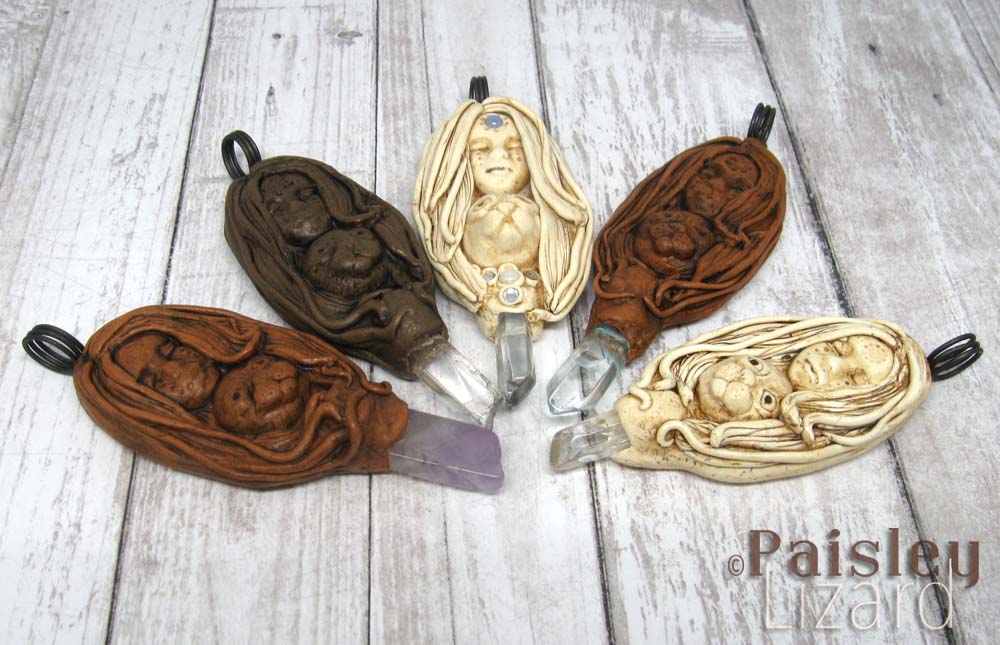
The theme for this month’s art design challenge from the Art Elements team is ‘selkies and the sea.’ I was so excited when I saw the theme because selkies are one of my favorite mythical creatures. In addition, I was a pinniped ecologist once upon a time and saw this theme as a perfect opportunity to try sculpting seals, and possibly sea lions. I’m warning you in advance, I got carried away making selkies and sharing seal trivia.
Pondering the origins of the myth
Selkies are a type of shape shifter. When in the water, they take the form of a seal. When on land, they appear as human. They are not half-human, half-seal, nor are they mermaids or sirens. They are were-seals, a type of faerie, a magical creature that can transform between human and seal shapes.
Most cultures have shapeshifter myths and legends. The ways in which the shifter changes form, and the number or kinds of forms it can take, vary as do the reasons for the ability to transform. In some mythology, therianthropy is a curse, while in others, it’s a gift. I like to ponder the origins of various myths. In the case of Selkies, which are of celtic origin, what might people living along the coasts of Scotland have seen that led them to develop stories of seals that can remove their skins and come ashore as humans? I have a theory and it has to do with a peculiar aspect of seal physiology.
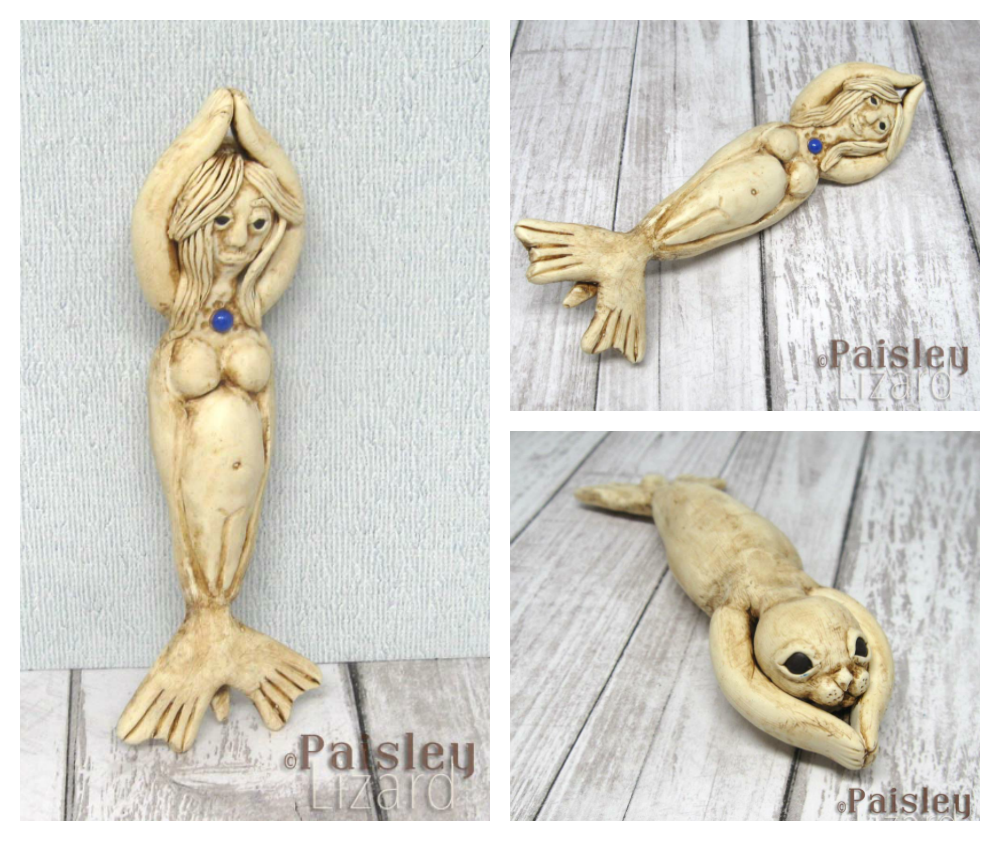
I knew of selkies before I began studying pinnipeds for my graduate project. So when, in graduate school, I learned how seals shed their hair and skin, I wondered if that could be the link between the myth of selkies and the reality of seals. Seals have what’s called a catastrophic molt, which isn’t anywhere as disastrous as it sounds, though it can look rather dreadful. Unlike you, your house cat or most mammals, which shed hairs and skin cells in a rotating cycle throughout the year, seals shed once a year, all in one go.
When seals molt in the spring, they rapidly grow a new coat, completely shedding and replacing their old hair (and topmost layer of skin) in a matter of weeks. Because this process is very energetically expensive, they need to spend more time on land than normal so they don’t waste energy keeping warm while in the ocean. If you happen upon a seal mid-molt, it really might seem as though they’re in the process of peeling off a fur onesie. The new coat of hair coming in will often be a different (lighter) color than what’s being shed. And if you visited a haul out site after a few dozen seals had molted and returned to water, you might find large pieces of molt that, if you didn’t know better, could be mistaken for pieces of a seal suit.
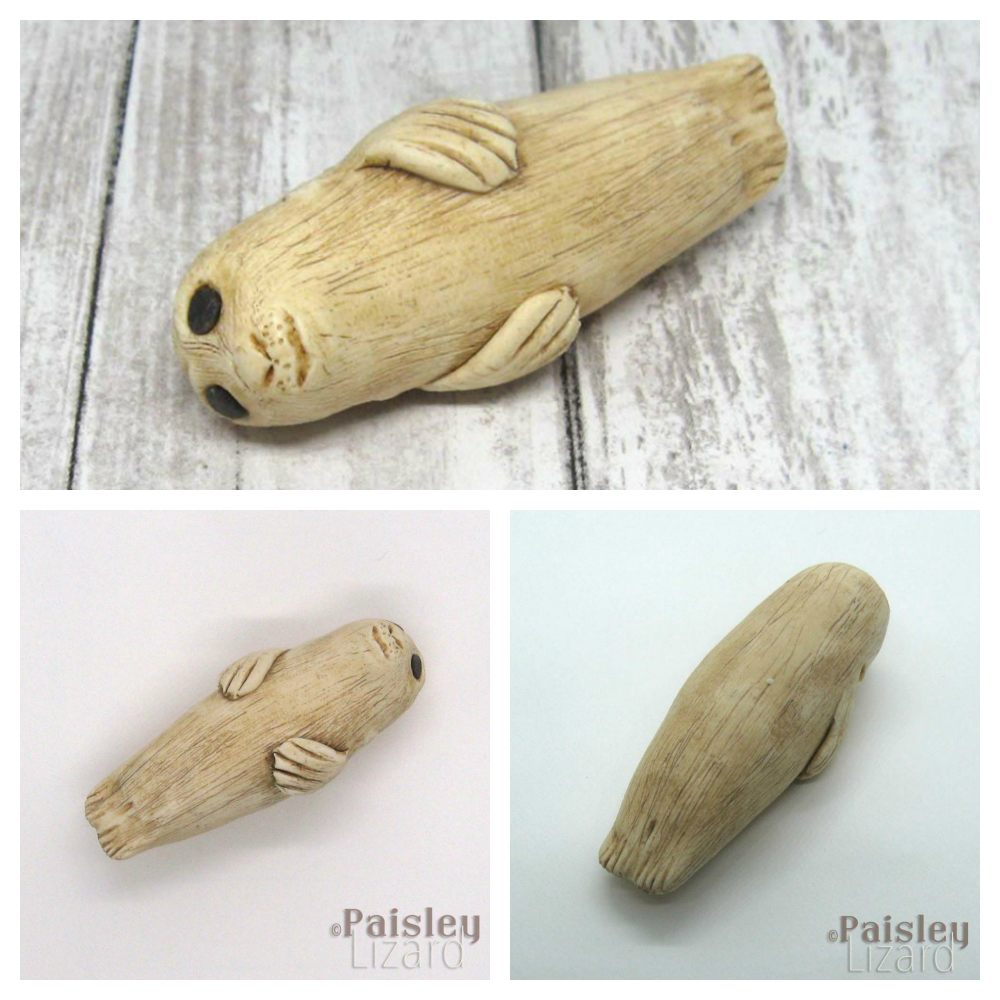
Of course, nothing I could find about the origins of the selkie myth mention molting seals. Rather, it’s more often attributed to sightings of people from countries/cultures that make clothing and boats from seal skins. I like my theory better – no seals are killed. Regardless, as much as the scientist in me wants to get to the bottom of the myth’s origin, the occultist in me just wants to believe faeries and shapeshifters are real and that there is magic in the world which science cannot explain. So maybe the legends of the selkie women who come ashore, stash their seal skins, mate with human men, and then return to sea are based on more than a quirk of seal physiology. And perhaps violent storms at sea really are caused by male selkies to sink ships used to hunt their seal kin.
The challenge in a face
My greatest challenge interpreting this theme is that I wanted to represent both the human and the seal forms of a selkie and I don’t have much (any) practice sculpting human faces (unless you count the unintentionally Groot-ish face on my tree spirit from last month’s challenge). I’m not being hypercritical of my newbie sculpting skills. I am being impatient because I want to instantly be able to create exactly the facial expression I can see in my mind’s eye. Instead, what I get is something from the abstract mind of Picasso, but far less intentionally or artfully so.
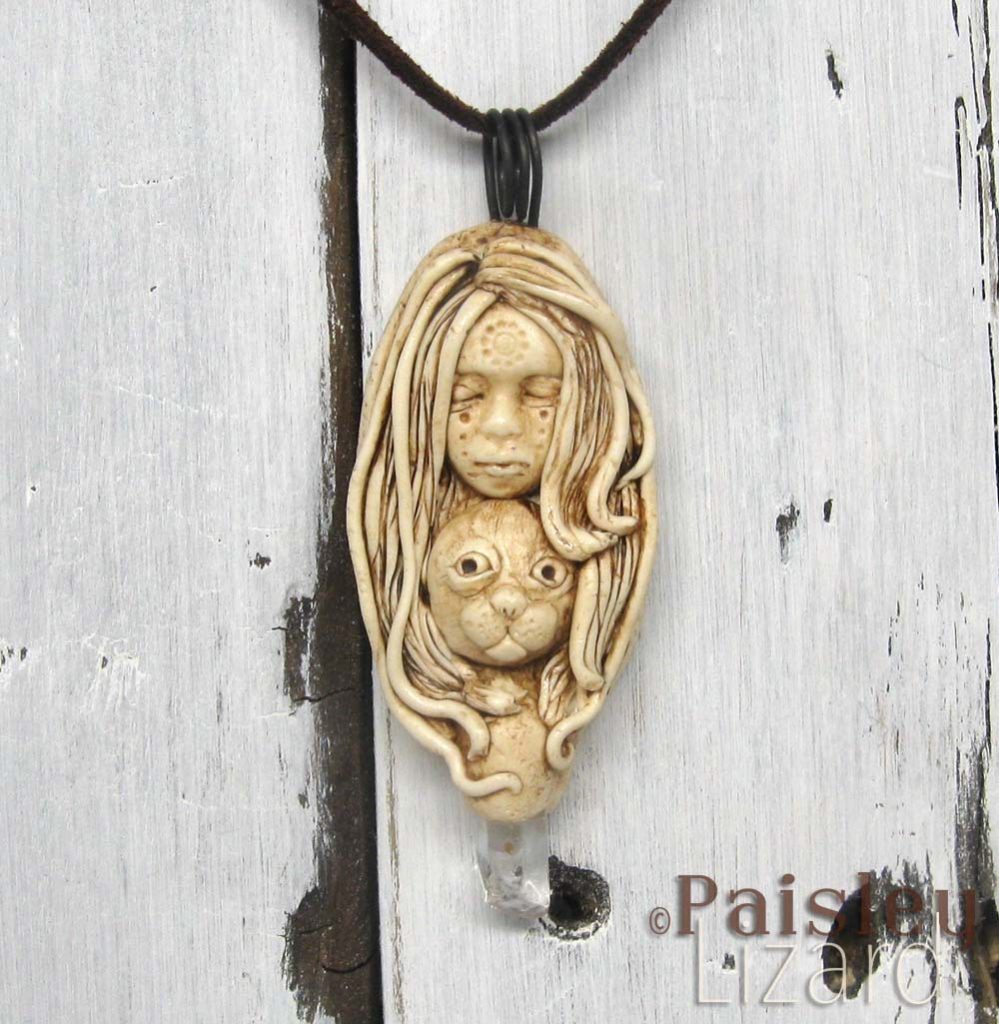
While I can manage to create features that look approximately like human eyes and noses, I can’t yet make the eyes and noses the shapes I want to create an on-purpose facial expression. And when it comes to mouths, well, let’s just say that if I were trying to create a lip-fillers-gone-wrong look, I am an instant expert. None of this is to suggest my seal faces turned out exactly as planned either. In fact, at least one of them looks to be wearing a gas mask or goggles. However, I did find making seal snouts that resemble actual seal snouts infinitely easier than human mouths. So naturally, I kept doing the thing that was easier (making seals) rather than practicing the thing I wasn’t having as much instant success at.
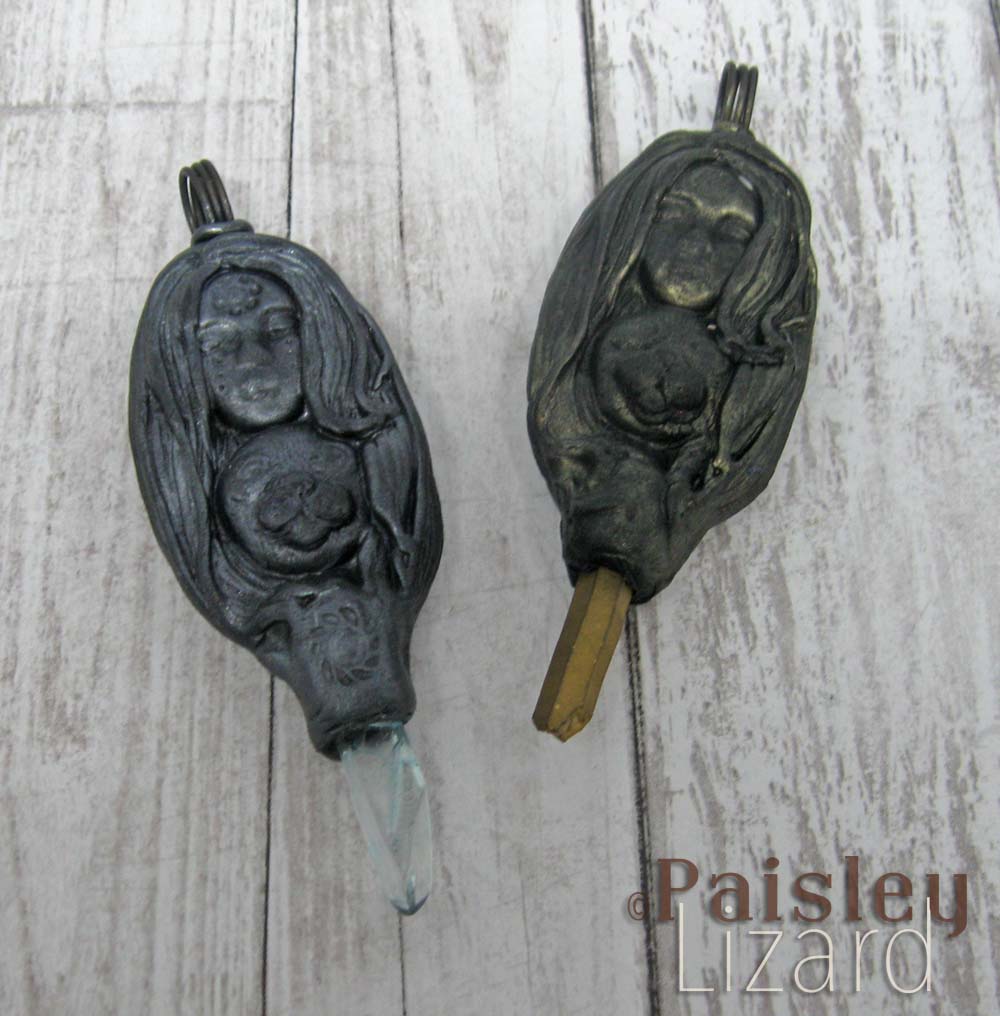
As usual, I had many more ideas than time to execute them. It’s full-blown summer here which means I won’t spend as much time working with polymer clay because I don’t want to heat my home up by using the oven to cure it. We had a “cold” front near the beginning of the month that kept daily highs below 80F/26.7C for nearly a week. I seriously contemplated taking the week off work to stay home and get more pieces sculpted/cured. I dutifully went to work instead. And resented that the “nice” weather couldn’t last into the next weekend.
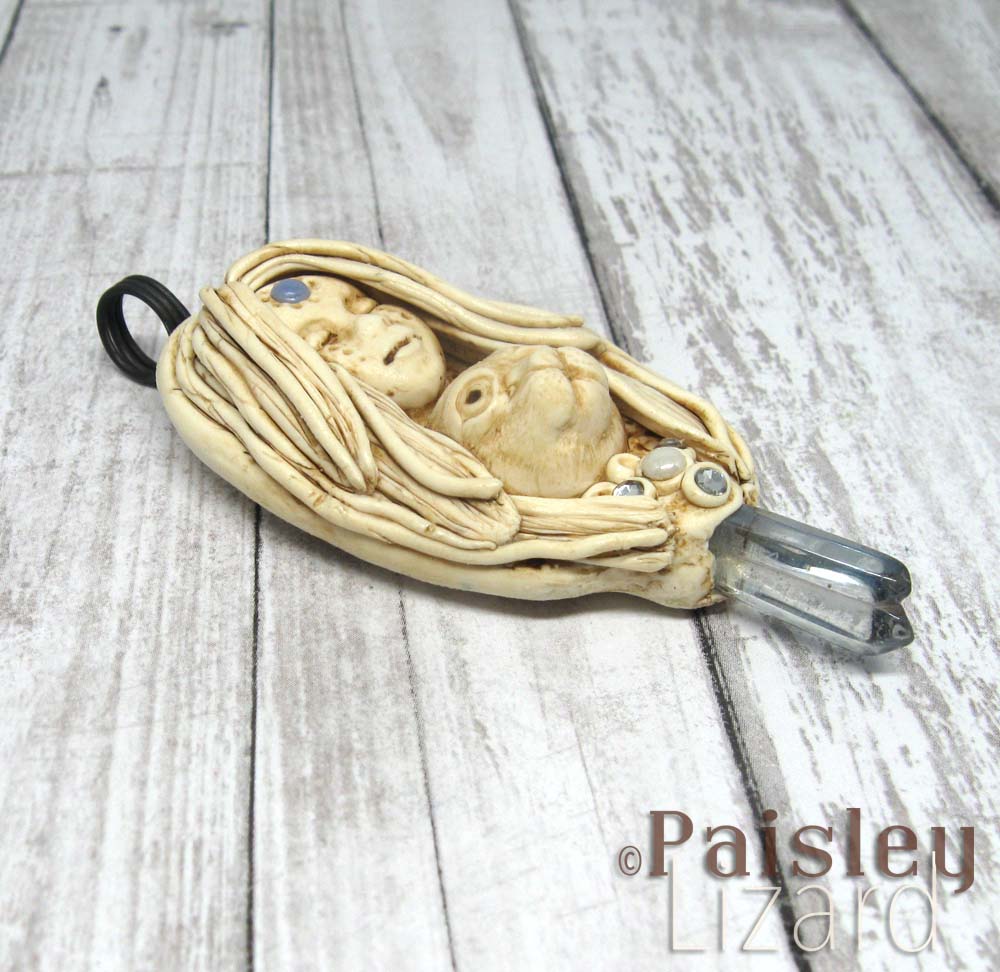
Some of my favorite seal trivia
As I mentioned at the beginning of this post, once upon a time I was a pinniped ecologist. My dissertation was on Steller sea lion foraging ecology and maternal investment, i.e., I wrote about what female sea lions ate and how much fat and protein was in the milk they produced. Btw, sea lion milk smells like fish.
As a consequence of my former life, my head is filled with the kind of pinniped trivia you are almost never likely to find useful in a pub quiz. It is nevertheless fascinating – at least I think so. And thus I take this opportunity to share a teeny amount just in case it comes up at your next trivia night
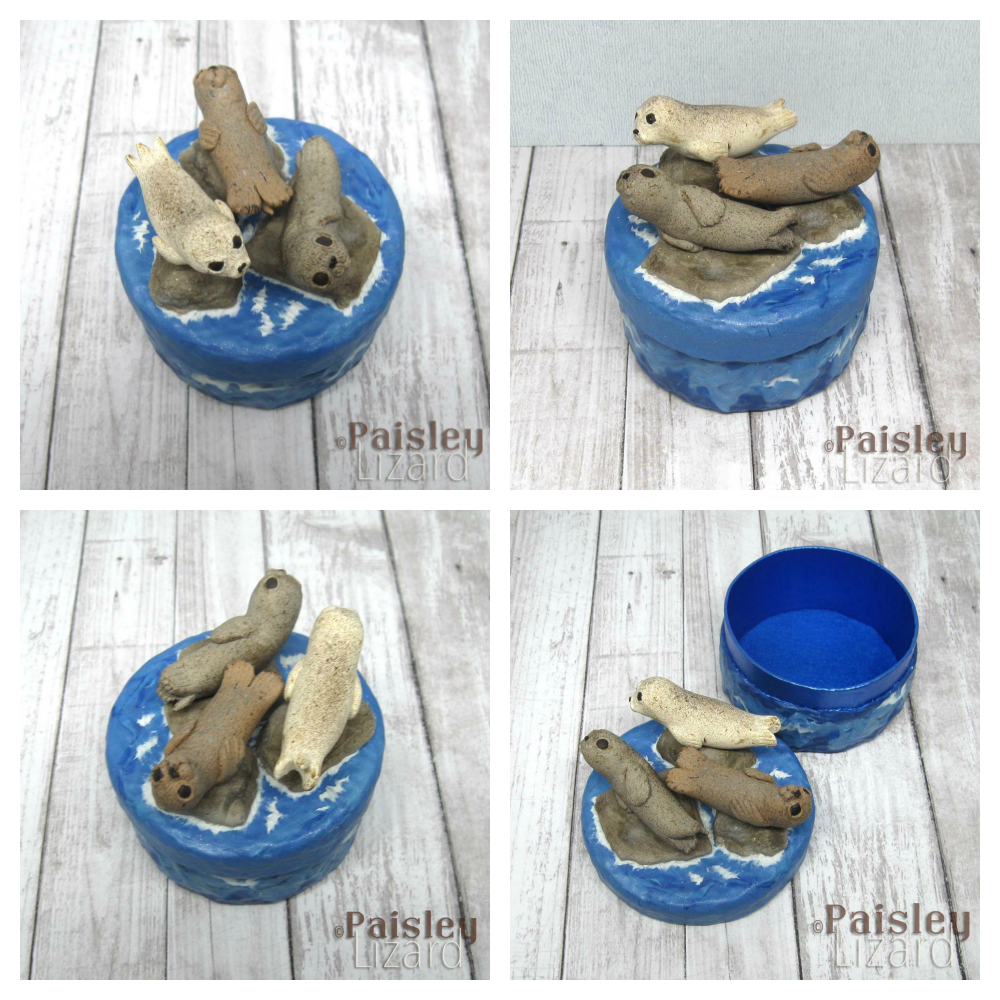
To begin, pinnipeds are divided (by humans who like to split things into groups) into the phocids (aka “true” or hair seals like harbor seals, grey seals, and elephant seals) and the otariids (aka “eared” seals like sea lions, fur seals, and walrus). In the United States, they are all protected by the Marine Mammal Protection Act which makes it illegal to hunt, kill, or harass them. Some are also listed as threatened or endangered under the Endangered Species Act, mostly due to long-lasting population effects of over-hunting (for the fur trade) and currently ongoing habitat degradation (including depletion of their food supply by commercial fishing). While they are all at risk from the climate crisis, ice-breeding seals are most immediately threatened because they depend on fast ice (the kind of ice that’s supposed to be there all the time but no longer is) for breeding and rearing their young.
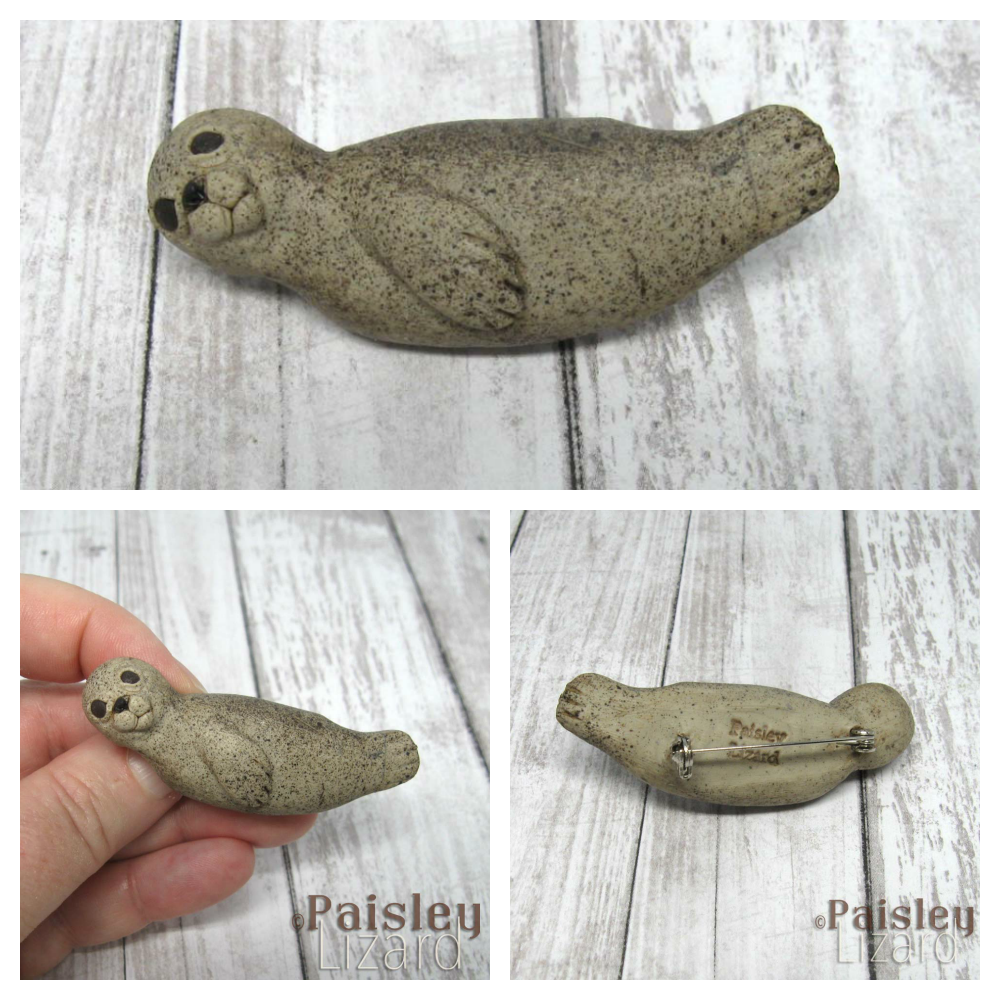
Some seals can produce hauntingly surreal chirps, trills, and ululations. Put in your ear buds or turn up your speakers and listen to these recordings of a Weddell seal and a ribbon seal (links go to a page at the University of California – San Diego). What makes these sounds even more fabulous is that some are produced via the seal’s nose!
Although their front and hind flippers have the same numbers and kinds of bones as our arms and legs, seals cannot walk. They cannot rotate their hind flippers forward and even when their front flippers can reach the ground (they cannot when a seal is especially rotund), they don’t use them to pull their body forward on land. As shown in this video of harbor seals on a beach in California, seals get around on land using a series of scoot/belly-flop undulations. While this may look awkward, it’s more effective than you might think, especially once they build up momentum. In contrast to seals, sea lions can walk on all fours and can even climb steep cliffs. They can also move a lot faster than you can over slippery rocks. (Ask me how I know.)
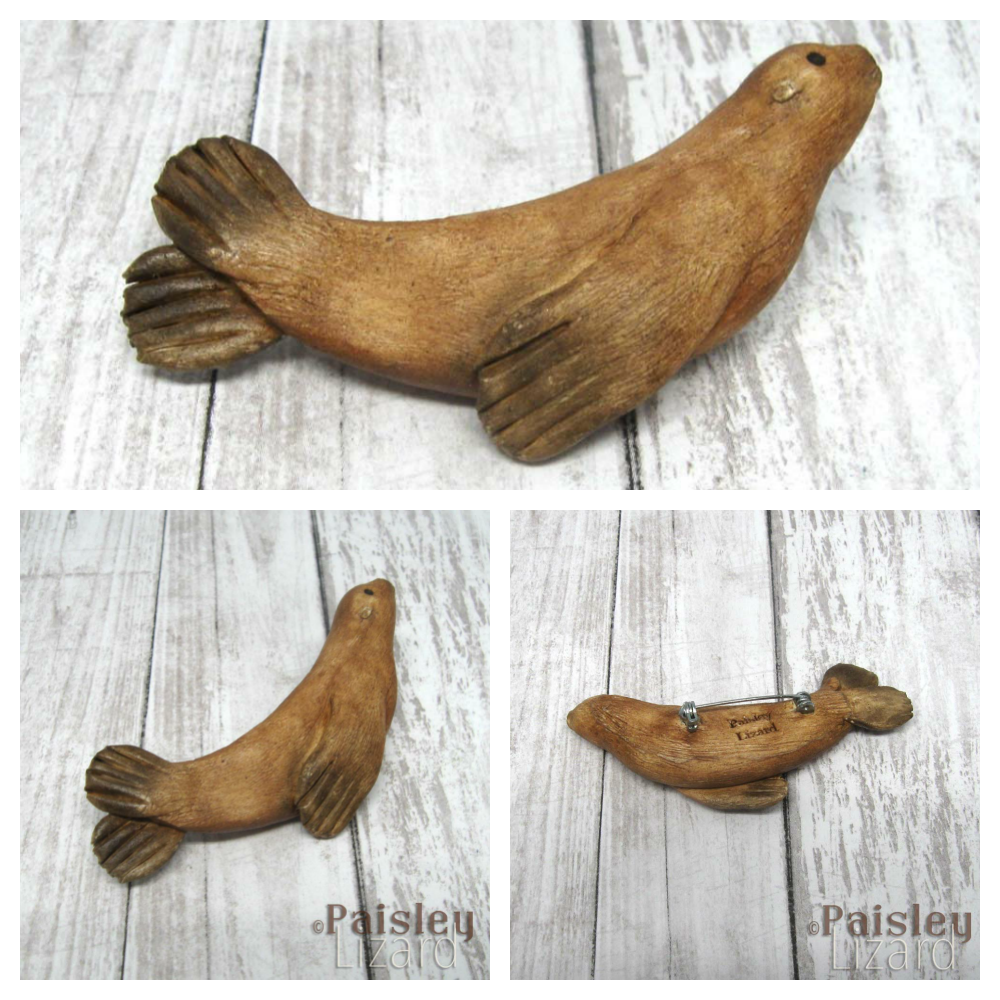
Seals are champion divers and breath holders. One adaption that contributes to this ability is that seal nostrils are clamped shut unless the seal intentionally uses muscles to flare them open. It’s a nifty way to keep from accidentally snorking in water. As a consequence of this adaption to a largely aquatic life, seals also hold their breath as they snooze on land. They wake periodically to take a breath as needed. When not taking a breath, their closed nostrils appear as nearly vertical slits.
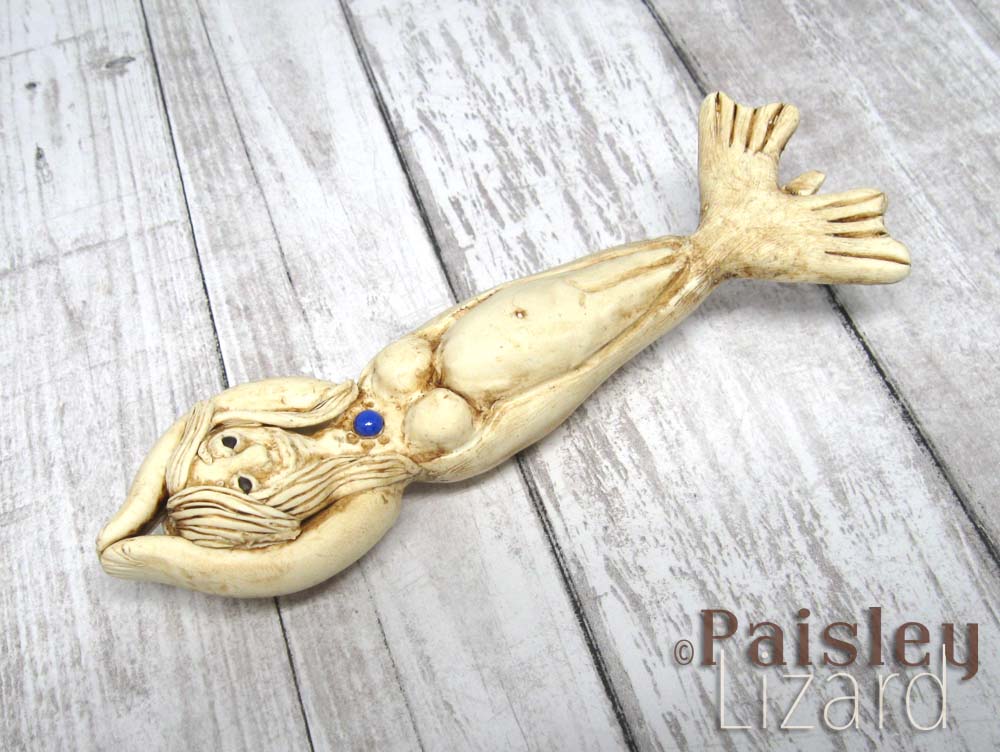
Seals produce super high fat milk (as much as 60% fat, compared to about 4% in cow’s milk) which allows their pups (that’s what baby seals are called by humans; idk what their moms call them) to grow at amazing rates. Also, seal moms do not eat during lactation. The hooded seal has the shortest lactation period of any mammal, lasting a mere 3-5 days. During that brief period, the pup more than doubles its birth weight (topping 40 kg at weaning) while the mom gets visibly thinner.
The “true seals” do not have external ear flaps; they have small ear holes. If you see a seal with little ear flaps on the sides of its head, it’s actually a sea lion or perhaps a fur seal. The absence of ear flaps does not mean seals can’t hear. They can hear you just fine and are ignoring you.
Hop in, the water’s fine
This challenge was super fun and I could easily spend all year making selkies, seals, and sea lions. Maybe if I did, I would develop the ability to sculpt expressions and such on purpose. But there are simply too many other ideas to try and I seem to have the artistic attention disorder commonly found among those who dabble in arts and crafts as a hobby.
This challenge is also a blog hop and I encourage you to visit the other participating artists’ links to see all the variety in materials and techniques used to interpret this theme.
Guests:
AE team:

Wonderful work Tammy and I think you’re being too hard on yourself over the face pieces…they’re my favourites and do look life like! Thanks for joining in with the challenge.
Thanks so much, Lesley. The faces don’t look the way I want so I get frustrated because it takes more than a minute to master them. I’m very impatient. 😀
What a wonderfully informative post (I did not know any of this) and your pieces are amazing! I don’t think I can even choose a favourite!
Thanks so much, Niky. I deliberated over putting in all the trivia but figured people could skim if they weren’t interested.
Oh my goodness those seal ‘songs’ are fabulous, I could listen to that all day especially the ribbon seal, beautiful and haunting all at once. I love your faces I think they work beautifully with the cute seal face too. Oh and I too prefer your theory on the lore of the selkies, how much nicer to think that the skins shed inspired the myth.. unless of course it isn’t a myth…..
Thanks so much, Laney. I agree, I could listen to seals singing all day. It’s magical.
Oh, I love all your creations! I had to laugh out loud when I read about sea lions milk… smelling like fish! Alhough that makes sense. My favorites are the last double head pendant with the added beads as well as the first brooch telling it as meant to be a brooch! 🙂
What a fun post to read! I’ve only seen a seal(?) in the wild once. We were walking along the coast of CA, somewhere central (I don’t remember the exact location, someplace close to Bodega Bay I think) when I noticed a lump in the water. So I watched hard (is that the proper way to say that?) and eventually could see the group of seals on a rock far in the distance, and one lone seal closer, just sitting in the water watching us. There was no one on the beach except the 4 of us. I just found it so entertaining that it was watching me watching it.
Anyway, what an interesting field you studied! I knew you were a scientist, but I’m not entirely sure I know what you do for your day job.
Your pieces are lovely. I laughed at the wookie comparison, but don’t see it. Every single one is fantastic, but my favorite is the figurine. I love the way it’s seal on one side and woman on the other. You totally should have taken the week off to enjoy the nice weather. Hahaha!
Thanks again for participating in the challenge. It’s always fun to see what you come up with.
Thanks so much, Jen. My day job as an “environmental compliance program manager” actually has practically nothing to do with what I studied but the information stays in my head anyway. LOL
Thanks so much, Claire. I was not expecting the fishy smell but, yes, it does make sense.
Gee, Tammy, I didn’t know how they molted! I would love to see that one day, and I believe that this is one example of how the Celtic folklore came about. Your other facts are fascinating also! I didn’t take part in the theme this month, but am going thru the hop!
I love all of your creations, and especially the hair detail on the pendants and your last little seal pin.
Thanks so much, Alysen. The hair detail was tough because of the too warm clay. I should make a note to try again when the weather – and my kitchen – turn cooler. It turned out okay but it was a struggle to get it into place.
Really enjoyed reading your post, your creations are fabulous! I love the first transforming seal bead, he has such a cute face and the colours are perfect!
Thanks so much, Caroline. I’m pretty pleased with how the color turned out.
I really enjoyed reading your blog. It brought back memories of our camping trip to the Moss Landing, CA where the camping site was next to a floating dock. It appeared that the seals had taken over the dock. They could be seen and heard everywhere. I totally agree with you that some seals can produce hauntingly surreal chirps, trills, and ululations. I think your seal broach is my favorite!
Thanks so much, Kathy. My field work was on an island in Alaska where the sea lions could be heard barking and bleating all day. I think it was the definition of cacophony. 😉
Great read and adorable pieces.
Thanks so much, Gloria. And thanks for stopping by.
Oh – I love every piece you created. Also, give yourself time to master the face!!! You still did a wonderful job. I love seeing the process and learning how you make each piece.
Thanks for sharing the trivia – that information is so cool!
I was stationed in Monterey, CA (DLI) for training. We always had the windows and doors open and we could hear the sea lions all the way up the hill. I loved it!
Thanks so much, Evie and Beth. I hope I will find a reason to keep practicing faces rather than get distracted by something else. Knowing me, the distracted is most likely. Sea lions can make quite a ruckus. Not nearly as melodious as some seals songs.
I thought your seals were charming and I liked their faces 🙂 I enjoyed seeing how you used them to make boxes, pins, and pendants – and were clever enough to incorporate crystals in some of them too. The information about seals was fascinating – thanks so much for sharing from you experience with them. Great post!
Thanks so much, Sarah. Glad you found the trivia fascinating.
I always enjoy seeing your work and learning about so many new things (I love that your brain is super science and artsy!). I was lead to wondering about my blubber and how fast I could move over sand and rocks – definitely do not have the right muscle build underneath to do it (the photo in my head just cracks me up!).
Thanks so much, Marsha. I like to think that science and art are sides of the same coin: they both require curiosity. And I know for a fact my abs are not up to racing a seal despite my respectable blubber layer. 😀
Oh Wow! Where do I begin? First, thank you for the abundance of info on seals & sea lions. It was fascinating to read all about them. I really had no idea they molted. That has to be one of the reasons behind the selkie myth. I love all you creations but my faves are the selkie figurine and the brooches. I especially love the sea lion brooch. I would never have known that your proportions were off. And you’re being extremely hard on yourself about sculpting faces. But I do understand the frustration with wanting to be able to sculpt/paint/bead what is in your head. And also be able to do it perfectly the first time! Patience is not one of my attributes-LOL
Thanks so much, Cathy. I definitely wish I could instantly master the art of sculpting faces because patience is also not one of my virtues. That whole ‘practice makes perfect’ thing takes waaaay too long.
I am in love with it all. your molting theory is extremely interesting and I loved all the trivia. I had NO idea seals and selkies were so special to you! I really like the larger figure where she is in the process of transforming. And I agree with the faces dilemma. I was challenged also. Maybe we need a faces challenge. Lol.
Tammy – thank you so much. Its all great fun and so much creativity this month. I like the pendants with crystals embedded. And you make me want to try a box….
Thanks so much, Jenny. You should definitely try a box – but be warned, it’s addictive. And yes, I think a “faces” challenge might be what I need to force me to practice. Thanks for a great theme!